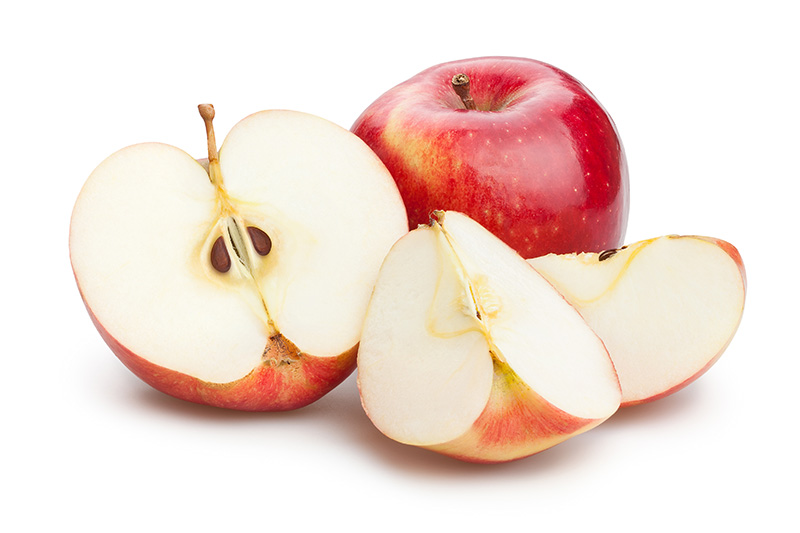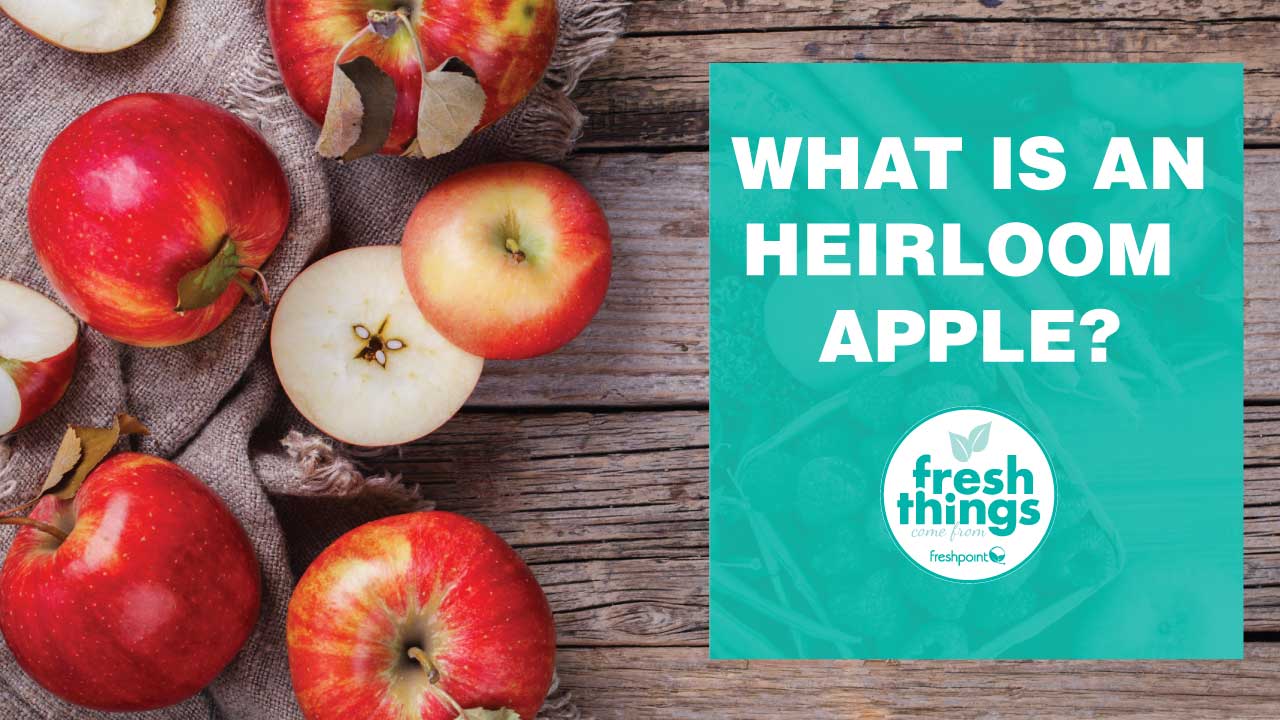Apples, Braeburn

Availability:
| J | F | M | A | M | J | J | A | S | O | N | D |
Description:
The Braeburn apple was discovered in 1952 in New Zealand and named after Braeburn Orchards. It is seedling of “Lady Hamilton” with the other parentage unknown, but possibly “Granny Smith”. The Braeburn apple is described as aromatic and tart. Tart apples are better suited for baking rather than hand fruit as they hold up well to the extra sugar required.
The three major apple-growing regions in the U.S. are the States of Washington, New York, and Michigan. Braeburn apples may also grow in New Zealand.
Receiving and Storage
When storing and handling apples, avoid dropping the case as they’re very susceptible to bruising–they’re still edible, but the bruising limits their shelf life and the bruises can also taste a little bitter.
Keep apples dry and wash them right before you use them, you don’t want them sitting in your refrigerator or your cooler wet, that breaks them down quicker.
You also want to keep them away from strongly scented items such as onions. An apple will absorb that onion flavor, and nobody really wants an apple that tastes like an onion. You don’t want to keep them near ethylene, it’s not sensitive, but it will shorten the shelf-life and it can make the apples a little mealy.
Recommended Storage Temperature
The recommended optimum storage temperature for the Braeburn apple is 32° – 40°F. We recommend you store them in the front part of your cooler (near the door). The temperature fluctuates from the front to the back of the cooler due to the location of the cooling unit and frequency of the door being opened. Download our PDF for more cooler storage hints.
Check out what’s going on this week. For our latest market update, please see The FreshPress.
You can also click here to be notified when we post fresh new videos.


